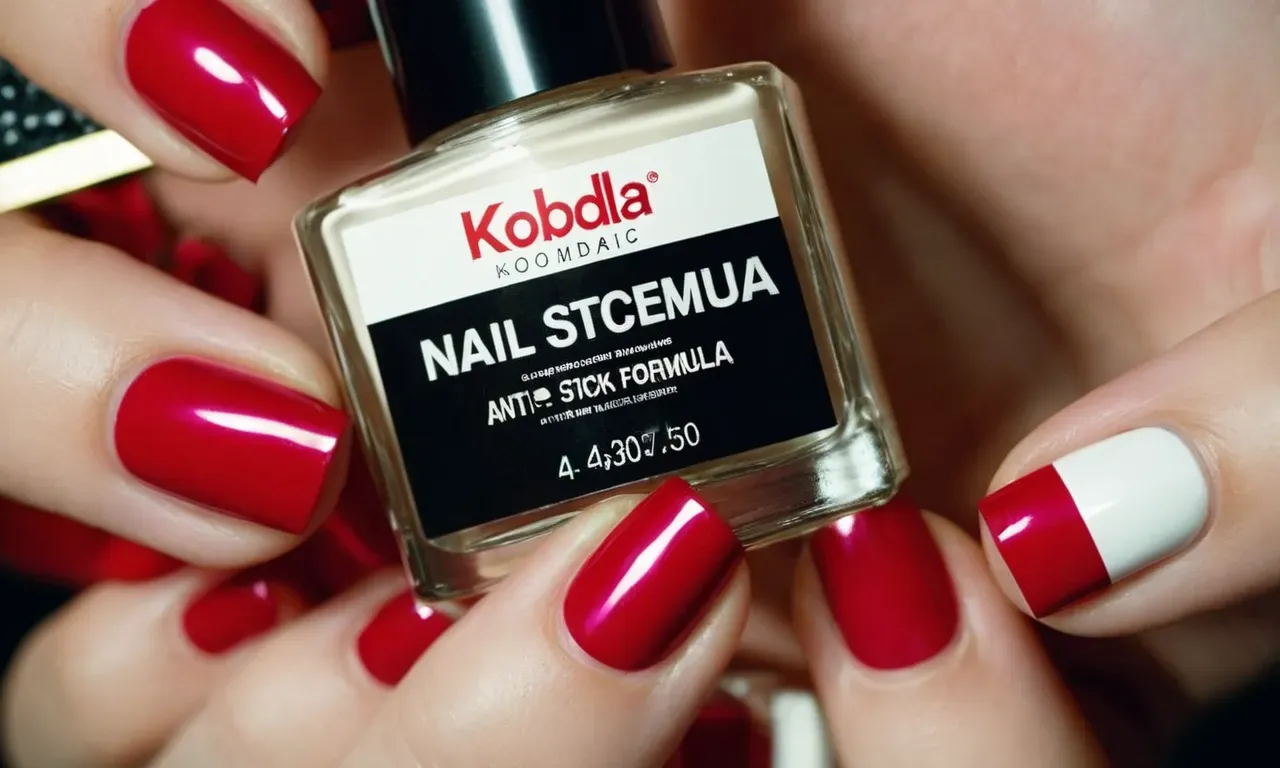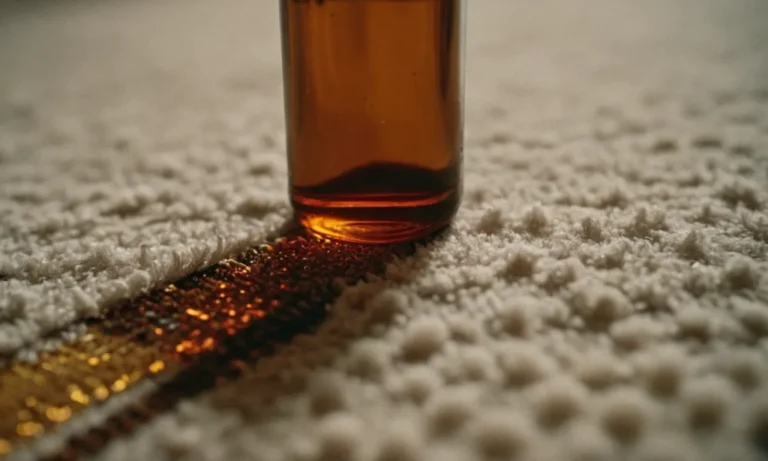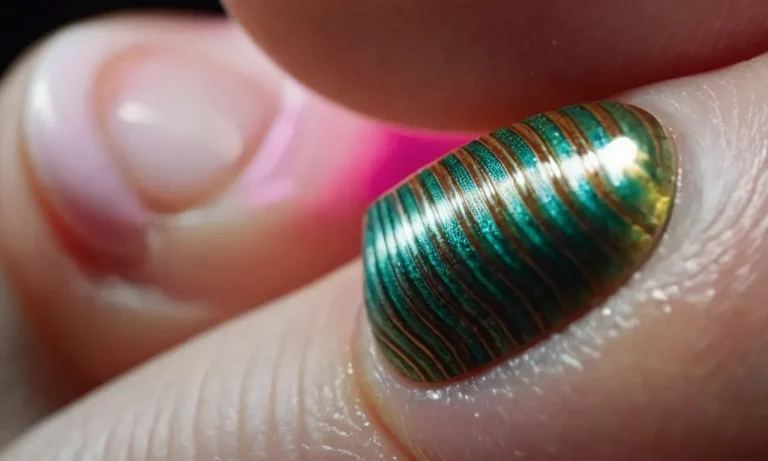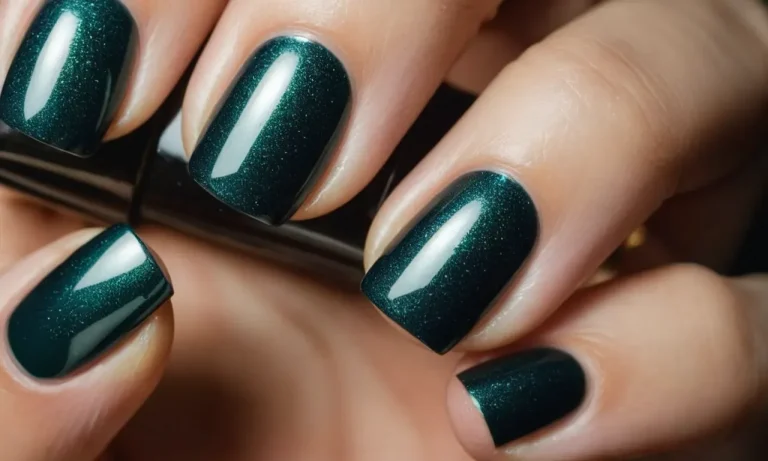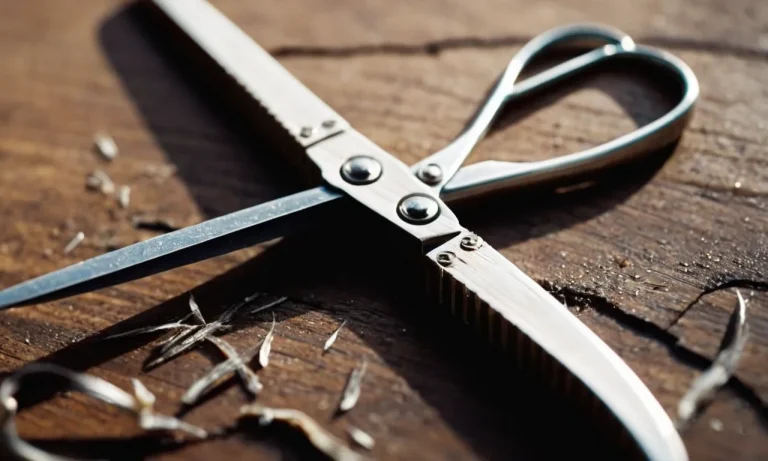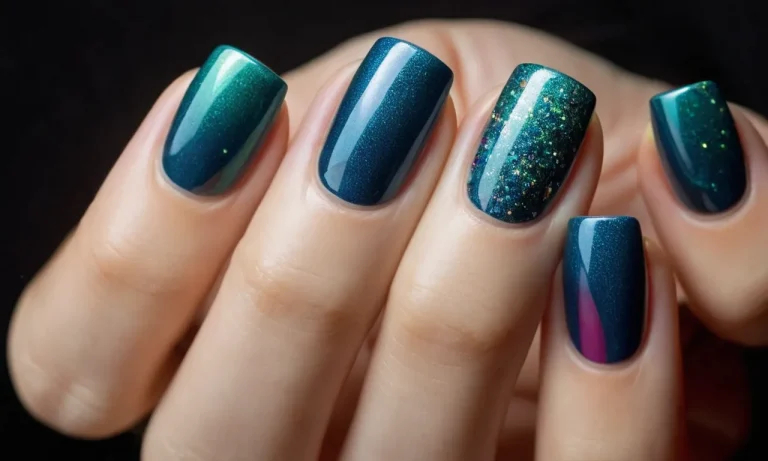What Nail Product Protects Against Stickiness?
Having sticky, tacky nail polish is one of the most annoying things when doing your nails. It seems like no matter how carefully you apply the polish, it still ends up getting sticky and gross. Luckily, there are products made specifically to prevent this dreaded stickiness.
If you’re short on time, here’s a quick answer to your question: A good top coat is the best nail product to protect against stickiness. Top coats create a smooth, even layer over nail polish to seal it and stop it from getting tacky.
In this article, we’ll go over the reasons why nail polish gets sticky, the different types of top coats to prevent stickiness, application tips for a smooth top coat, and recommendations for the best top coat products for non-sticky nail polish.
Why Does Nail Polish Get Sticky?
Exposure to Air
One of the most common reasons nail polish becomes sticky is exposure to air. When you first apply nail polish, it dries to a smooth, shiny finish through a process called solvent evaporation. The solvents in the polish evaporate, leaving behind the resin that forms the dried polish film on your nails.
However, with time and air exposure, the solvents can re-emerge, causing the polish to feel sticky or tacky to the touch. This is especially likely if you use quick-dry polishes, which contain high proportions of volatile solvents to speed up drying time.
Leaving the bottle open or having nails exposed to the air for extended periods allows more time for these solvents to evaporate and then re-absorb into the polish.
Formula Composition
The actual formula of the nail polish also plays a role in stickiness. Some polishes simply contain ingredients prone to remaining tacky rather than fully curing to a hardened finish. For example, certain resins do not cross-link and bond together as tightly as others, leaving them soft and sticky.
Plasticizers meant to increase flexibility can also lead to sticky polish over time as they migrate out. Using polishes with suboptimal proportions of resin, solvents, and plasticizers can therefore cause stickiness no matter how carefully you apply them.
Cheaper polishes may be more likely to have these issues. High-end salon polishes generally have better formulations less prone to getting tacky.
Thick Layers
Applying polish too thickly can also cause stickiness. Having many layers or very thick layers prevents adequate solvent evaporation from the lower layers of polish. This traps solvent underneath the topmost layer, where it can condense and be reabsorbed into the polish.
Thick layers also put a greater volume of polish at risk for the resin components separating. Sheer, glaze-type polishes are especially likely to stay tacky if applied too heavily. Using thin, even coats allows optimal drying and curing.
Two thin coats are better than one thick coat when it comes to avoiding stickiness.
Types of Top Coats
Regular Top Coat
A regular clear top coat is the most common nail product used after applying colored polish. It helps prevent chipping and peeling by adding an extra protective barrier over the polish underneath. Most regular top coats provide modest glossiness and protection.
They dry to a smooth, slightly shiny finish and tend to last 1-2 weeks before needing replacement. Popular regular top coat brands like Seche Vite and Sally Hansen Insta-Dri are inexpensive, convenient options found in drugstores and beauty supply shops.
Gel Top Coat
Gel top coats offer extended wear with intense shine and protection. They contain polymers that bond together similar to gel manicures done in salons. Gel top coat is applied as the final step, sealing the complete manicure underneath with tough flexible layers.
While more expensive than regular polish, gel top coats yield flawless chip-free nails for up to 2 weeks. Leading professional brands like CND Vinylux are beloved for their durability. For a DIY gel effect, try an LED curing system from Sensationail for convenience at home.
Matte Top Coat
Matte top coats transform polish from shiny to a smooth silky matte texture. They use flattening polymers to scatter light and reduce gloss for an understated, modern finish. Matte is a trendy runway style that has gained mass popularity for its cool, velvety appearance.
An iconic pioneer brand is Essie’s Matte About You. Apply over creme colors for the most smooth texture. Glitters and shimmers work too, but with a textured grittier effect. Matte top coat should be reapplied every 2-3 days as needed since the finish wears quicker than glossy polish.
Ridge Filling Top Coat
For nails plagued by unsightly ridges, this specialty top coat is the solution. Formulated with flexible acrylic polymers, ridge filling top coats smooth bumpy uneven nails by filling in irregularities with a protective layer. The result is a glass-like manicure with a revitalized appearance.
Leading brands in this niche market include Orly Ridgefiller and Sally Hansen Miracle Gel Ridge Filler. According to beauty experts, consistent use can train nails to grow flatter overtime. Reapply this top coat every 1-2 days for best ridge concealing, protection, and nail improvement over time.
How to Apply Top Coat for Non-Sticky Nails
Wait for Base Coats to Dry
One of the most common reasons for sticky nail polish is not allowing enough time for base coats to dry before applying the color. Base coats create a smooth, even surface for polish to adhere to, so it’s crucial to let them dry completely.
Allow at least 10-15 minutes of drying time before adding color. Rushing this step can cause base and color coats to interact and get gummy. Patience pays off with a flawless, non-sticky manicure.
Use Thin Layers
Applying polish in thin, even layers is key for long-lasting, non-sticky nails. Thick globs of polish take much longer to dry, allowing more time for adjacent coats to interact. This results in tacky, gooey polish that never fully dries.
For best results, dip the brush into the bottle and wipe off any excess on the rim before smoothly stroking it over the nail. Two to three thin passes creates better coverage than one thick coat. Allow each layer a few minutes to dry before adding the next.
Cap the Free Edge
Polish should extend just slightly over the edge of the nail to properly seal it. Capping the free edge prevents chipping and peeling by reinforcing this vulnerable area. Be sure to include the tip of the nail when applying both base and color coats.
However, avoid flooding the surrounding skin with polish, as this catches on things and causes chips. A tidy application is crucial for long-lasting, non-sticky nails.
Don’t Apply Too Quickly
Trying to apply polish too fast can result in streaky, uneven coats that never fully cure. Rushing the process also increases chances of smudging between layers before they dry. Work on one hand at a time, allowing adequate drying time between each nail.
Resist the urge to rush through and focus on careful, deliberate strokes. Good things come to those who wait – including flawless, non-sticky nails.
Seal the Edges
Applying top coat just to the surface of the nails isn’t enough to prevent stickiness. For best results, brush top coat over the entire nail and wrap it around the tip and edges. This seals the polish and prevents peeling that exposes tacky lower layers.
Pay special attention to the sides of the nail near the cuticles, as these are prone to early chipping. A little extra top coat here goes a long way in preventing stickiness issues down the road.
Best Top Coats for Non-Sticky Nails
Essie Gel Couture Top Coat
The Essie Gel Couture Top Coat is an amazing top coat that helps prevent nail polish from getting sticky. This top coat goes on smoothly and dries to a hard, glossy finish. One of the best things about this top coat is that it helps nail polish last up to 14 days without chipping or peeling!
It contains polymers that bond to the nail polish underneath to create a strong, flexible layer that resists chips. Many users say their manicure stays flawless for over a week when using this top coat. It also helps prevent smudging or denting.
If you struggle with nails getting sticky between polish changes, Essie’s Gel Couture Top Coat is a great solution.
OPI Top Coat
OPI’s Top Coat is a cult favorite top coat that helps prevent nails from getting sticky. This top coat is beloved for its high-gloss finish and ability to dry fast. It goes on smoothly without clumping or running into cuticles.
The formula contains silicone and acrylic polymers that create a durable, long-lasting shield over nail polish. Not only does it help nail polish wear longer without getting sticky, but it also resists chipping and peeling. After application, it ensures nail polish will be touch-dry in minutes.
If you’re looking for a top coat that delivers brilliant shine and rapid drying without stickiness, OPI’s Top Coat is one to try.
Sally Hansen Miracle Gel Top Coat
The Sally Hansen Miracle Gel Top Coat is specially designed to deliver a no-chip manicure that resists stickiness. This top coat uses advanced technology to provide gel-like shine and protection without the need for a UV lamp.
It contains polymers that wrap around each nail polish layer to lock in color. User reviews consistently mention how this top coat prevents smudging, denting, and stickiness. Your manicure will stay flawless for over a week.
An easy peeling base coat allows you to remove the polish without harsh acetone too. For beautiful, non-sticky nails that last, reach for Sally Hansen’s Miracle Gel Top Coat.
Seche Vite Dry Fast Top Coat
Seche Vite Dry Fast Top Coat is an excellent choice for preventing nail polish stickiness between manicures. This top coat is specially formulated to dry nail polish incredibly fast. In fact, it delivers a hard, dry finish in only 5 minutes!
The ultra quick-drying ingredients form a durable, flexible layer over nail lacquer. This helps prevent chipping, peeling, and the polish feeling tacky or sticky when dry. Seche Vite allows you to get a salon-quality, shiny manicure that resists smudging or denting.
Reviewers can’t stop raving about how it helps their nail polish stay perfect for over a week, even during heavy activity. For a top coat that eliminates stickiness, Seche Vite is highly recommended.
Holiday Ridge Filling Base Coat
For the smoothest, most flawless manicure, don’t forget about using a base coat! Holiday Ridge’s Filling Base Coat helps prevent stickiness by filling in any ridges or imperfections in the nail. This allows nail polish to glide on smoothly and evenly with no streaks.
The formula contains nourishing ingredients like vitamin E, sunflower oil, and rosehip oil to condition nails. Not only does this base coat help polish apply perfectly, but it also helps it adhere better to the nail. This prevents chipping, peeling and of course, stickiness between manicures.
Using Holiday Ridge’s Filling Base Coat under your favorite nail polish provides the perfect foundation for a long-lasting, non-sticky manicure.
Conclusion
A sticky, goopy nail polish nightmare doesn’t have to be inevitable. Investing in a good top coat and learning proper application techniques can help you achieve a smooth, long-lasting manicure. The right top coat seals in nail color, evens out texture, and prevents exposure to air and oils that can cause stickiness.
Give your nails some TLC with a top coat made for preventing polish troubles.

